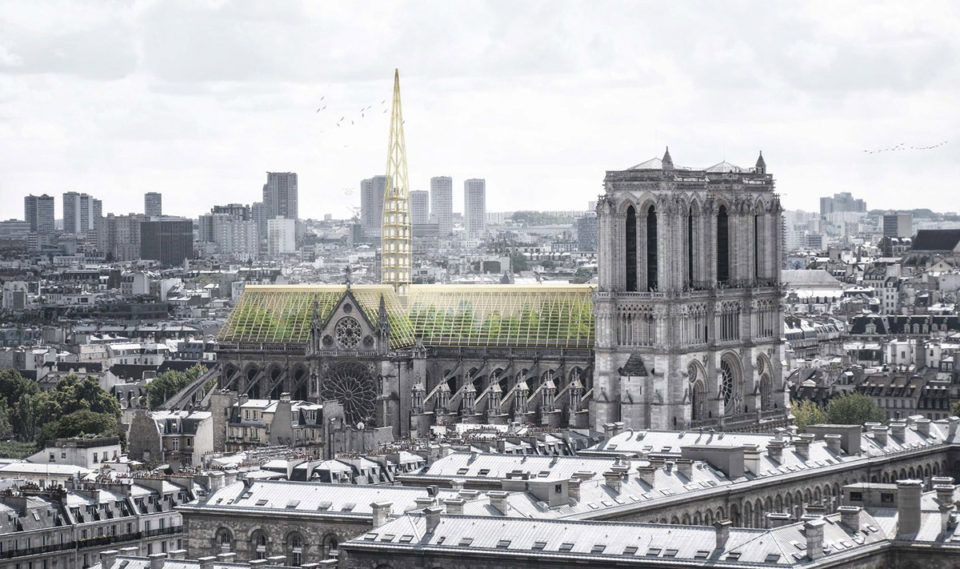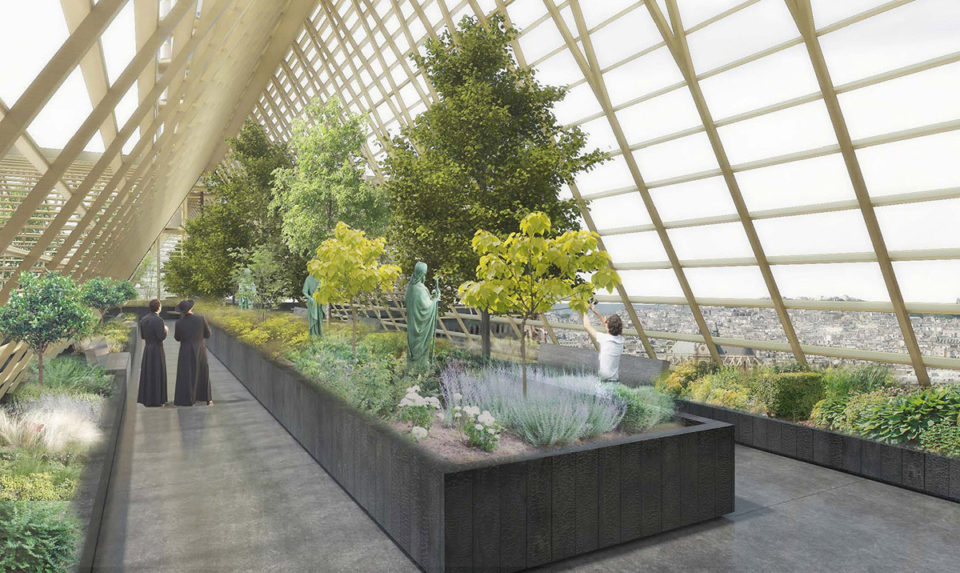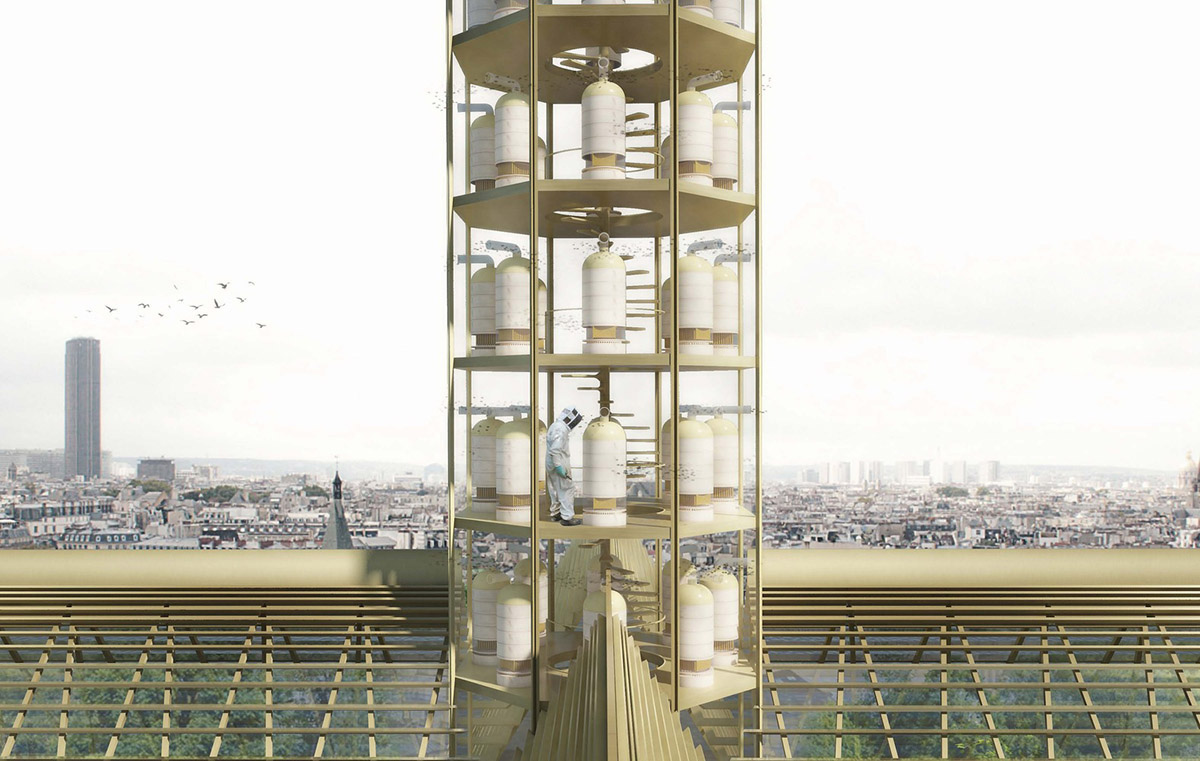It seems like proposals to restore the Notre Dame Cathedral in Paris came pouring in before the blaze that destroyed its spire and roof was even extinguished. Grappling with devastating damage to a historic and architectural icon, observers around the world immediately began to debate whether the cathedral should be recreated as faithfully as possible in its former image (a serious challenge, considering the contemporary lack of massive old-growth timber) or radically reimagined.
One notable proposal released by Studio NAB takes the latter approach with a visionary reconstruction symbolizing rebirth, new growth and hope for the future. The design recreates Notre Dame’s silhouette in a framework of gold-tone steel and glass, transforming the uppermost levels of the church into a lush greenhouse, an active community space and an educational facility. A new “arrow” spire would house apiaries, producing on a large scale “the honey of Notre Dame de Paris.” The rest of the cathedral beneath this new roof would remain as it has always looked and functioned.
It’s a direct rebuke of the idea that we can or should attempt to recapture the past, adapting instead and acknowledging the need to change along with the world around us.
“On this fire and in the period of crisis that the country and the world are currently going through, we have the chance to build a place of reference where conservation, enrichment of an exceptional heritage and taken into account the challenges of societies ecology and equal opportunities. Protecting the living being reintroducing biodiversity, educating consciences and being in solidarity, all are symbols, faithful to the values of France and those of the church, that we could defend and promote for this project.”
“This is the symbol of acceptance of the course of history and the metaphorical illustration that this ‘forest’ became burnt wood, can serve as a cradle to the new vegetation,” say the architects. “The design will feed the all-important conversation and add an element of reflection as to how the building could be transformed to focus on issues concerning today’s society. The greenhouse is imagined as a place to enable to professional reintegration of the poor by learning urban agriculture, horticulture and permaculture while connecting children to nature and educating them through workshops.”
It’s an interesting way to approach the problem of restoration, and one that will undoubtedly stir controversy. But Studio NAB’s proposal creates a ghostly yet optimistic memory of the lost parts of the cathedral, maintaining the silhouette to which Paris has grown so accustomed, without introducing any garishly contrasting contemporary elements. You can safely bet that proposals recalling Daniel Libeskind’s highly controversial Royal Ontario Museum Extension are forthcoming, along with calls to be far more conservative, using modern technology like engineered wood to replace the burned beams and reinforce damaged structural elements.
Though it comes early in the game, Studio NAB’s proposal will likely end up looking like a compromise between these two extremes by the time France’s competition to redesign Notre Dame selects its winner.


